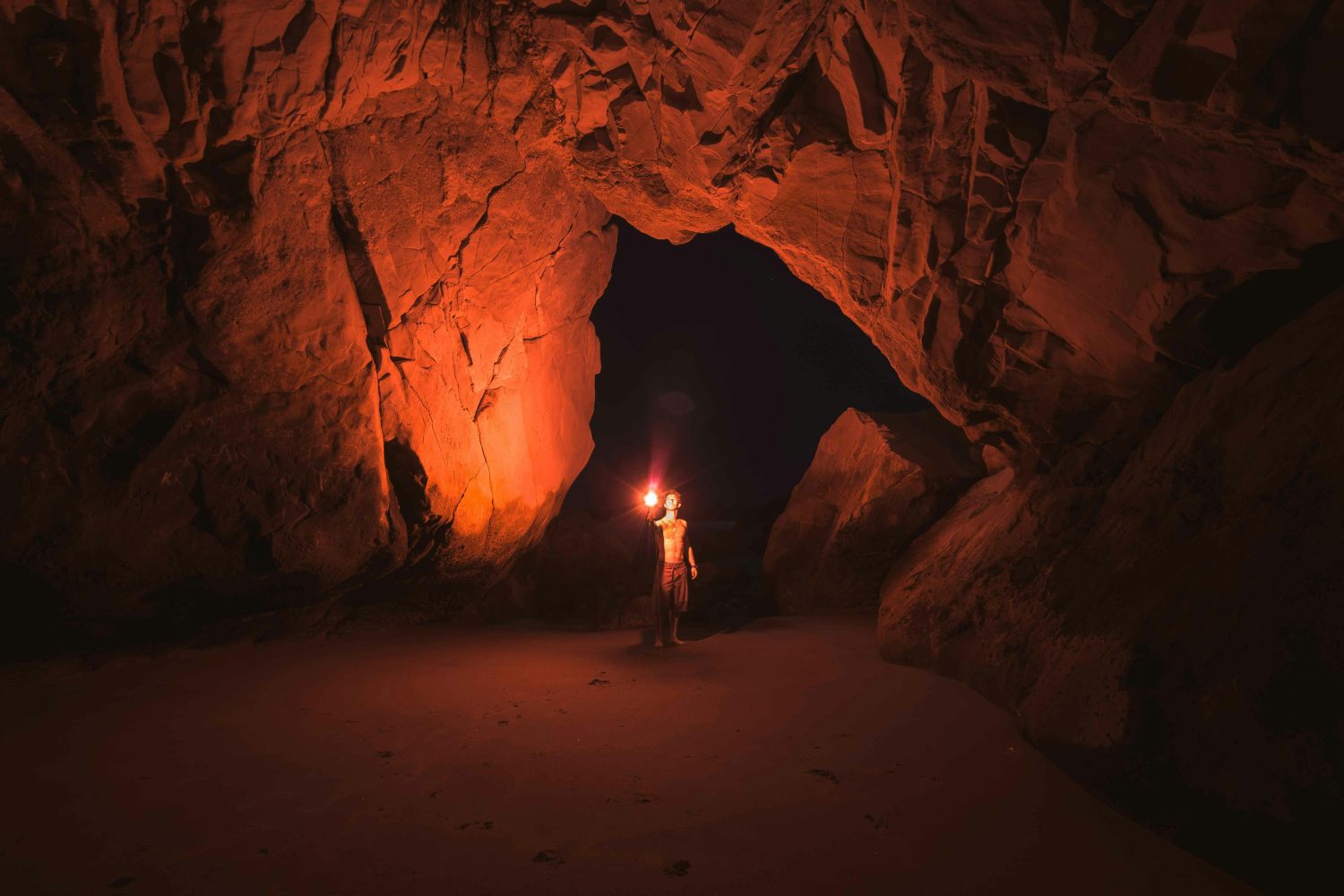What does it mean to insist on burial when sovereignty demands extreme exposure, the gruesome spectacle of decomposition? What is it like to grieve under siege?
Antigone, in Sophocles’ eponymous tragedy, is anything but an idealist. She refuses to “hope and pray”; instead, she acts. She knows that she has no future within the city as governed by Creon, and still, she performs the rites of burial for her brother. Antigone does so neither to reform the state nor to challenge authority per se, but to fulfill a deeper obligation: to the dead, to kinship, to a law that is neither written nor revoked. It is a law beyond law—not because it is “divine,” as has been often claimed, but because it values singular relations before power. It binds the living to the dead in a continuity that is as ancient as it is invisible to the powers that be and that requires a special kind of work, the work of mourning.
Creon responds to Antigone’s act of civil disobedience by placing her in a cave, alive, but without food, light, or air. There are no ties between the living and the dead as far as he is concerned: the one who affirms them must, herself, migrate to the realm of the dead. Immured, Antigone is to die slowly, privately, hidden away from the city, in contrast to the exposure allotted to her brother’s decomposing corpse. Creon’s reasoning is cynical: let the gods (whom she obeys before and instead of him) save her, if they care. Otherwise, she should die somewhere beyond the jurisdiction of the state and of the inhuman human law that determines her fate. His act is bureaucratic, calculated, almost administrative. He withholds the essentials of life without shedding blood. The violence lies in withdrawal, rather than in force. She is left to die, not directly killed.
Gaza is placed in a similar cave. Not underground, but under blockade—including of journalistic coverage—, bombardment, and starvation. (Literally underground are the Israeli hostages held there.) The essentials are withheld: water, bread, electricity, housing. In addition to “frames of war”—to resort to Judith Butler’s expression—imposed on Gaza, its population suffers extreme isolation. The fate of the Strip exceeds the scope of sheer destruction (though there is plenty of that, too), veering into devastation and deprivation. Israel’s plan for Gaza is to keep a population in life long enough to suffer and to unravel, but not long enough to recover; to allow them to live only in order to die slowly, unseen, unfed, unmourned.
Starkly relevant to “our” times, the twisted rationale of Creon is visible again, diffused across systems, policy language, funding tables, and risk assessments. And it is especially concentrated in the genocidal deprivation of the conditions that are necessary for life. The cave becomes the Strip, its entrances sealed, aid indefinitely delayed, deliveries obstructed. A recent IDF ban on Gazans bathing in the Mediterranean immures them further, isolating them from the life-giving elements. No wonder that some speculate whether, after water, air and breathing will be banned, too. In what amounts to a coherent strategy of abandonment, starvation policy is administered, piling deaths from hunger, dehydration, and the collapse of medical infrastructure over those resulting from bombings and shootings.
Creon speaks of law and order, of security and sovereign right, and he sees Antigone as a threat to the state. What or whom does she really threaten, though? A framework that blocks the acknowledgement of the very humanity of certain human beings? Creon cannot allow her brother to be buried: to do so would risk recognizing his humanity. Israel’s leadership does not wish to recognize the humanity of Gazans (whom they have called “human animals”) in life or in death. There, beyond official and ever so partial tallies, the dead are countless. Their names are recorded only by those who grieve them. Often, they are buried hastily, if at all. Sometimes, their bodies remain under rubble for days, or never recovered. The possibility of mourning is fractured, and yet the grieving continues. In defiance of erasure, people carry bodies in blankets, dig graves with bare hands, recite prayers amid ruins, write names on walls. These are more than cultural gestures; they are political refusals. They heed the law of relation, stronger than sovereign decree.
Antigone is locked away in a dark tomb by Creon who rationalizes this exclusion (from public space and from life; indeed, from the one as from the other) in terms of what is necessary for public order. His city, Thebes, suffers as a result—not from foreign enemies but from within. His own son, who loved Antigone, dies by suicide. His wife, Eurydice, follows suit. The punishment extends beyond the immediate target; it boomerangs back to the presumably all-powerful sovereign. The city, which believed itself preserved by force, internally disintegrates. Sovereignty, when it refuses any limits, becomes self-destructive, which is a lesson autocratic rulers would do well to learn (unless they have already learned it and are oblivious to the warnings, following instead the silent and suicidal injunction of the death drive).
So, Creon is hardly an ancient anomaly; he is a prototype. His form of governance—death by neglect, by withholding, by structural abandonment—has become paradigmatic in the neoliberal age. He governs by exhaustion and manufactured scarcity. His is the violence of delayed deliveries, of budget cuts, of sealed borders. This is the political logic of our time: death administratively managed, rationed economically, rationalized in the language of security and restraint.
But in Gaza, this logic reaches its breaking point. There is no disguising the mechanisms of neoliberal abandonment there. And they are combined with the most brutal forms of violence, lethal and direct. The slow death by starvation is paired with the immediate death dealt by airstrikes, artillery shells, or bullets. The destruction of bakeries and farmland, the targeting of water infrastructure, the bombing of hospitals: these are acts that combine letting-die with taking lives.
We are privy to the collapse of two modalities of sovereignty into one: in the apparent chaos, which is itself increasingly a weapon of choice in the arsenal of contemporary Creons, Gaza is governed through the simultaneous withdrawal of soft power and saturation of brute power, through absence and excess. Only formally is this contradictory, while de facto the neoliberal state that lets die and the totalitarian state that actively kills operate in tandem. In Gaza, their techniques fuse together in a politics of managed annihilation and making uninhabitable that destroys not only people (the people and a people!) and other living beings but the time and space they require to appear and to be in the world. Yet, Gaza is also the name for what happens when genocidal power, unchecked and unsympathetic, meets a people who refuse to vanish.
If I propose to view Gaza through the lens of Antigone, it is not to offer consolation, nor, even less, to mythologize and aestheticize extreme, multipronged violence. Rather, sometimes, a clearer vision is afforded by ancient stories that retain their crispness and relevance, holding a mirror before the present.
The entire population of Gaza, with the few remaining Israeli hostages, is now Antigone. And, alongside Israel, the entire world is Creon, watching, rationalizing, calculating. Until it is too late.



